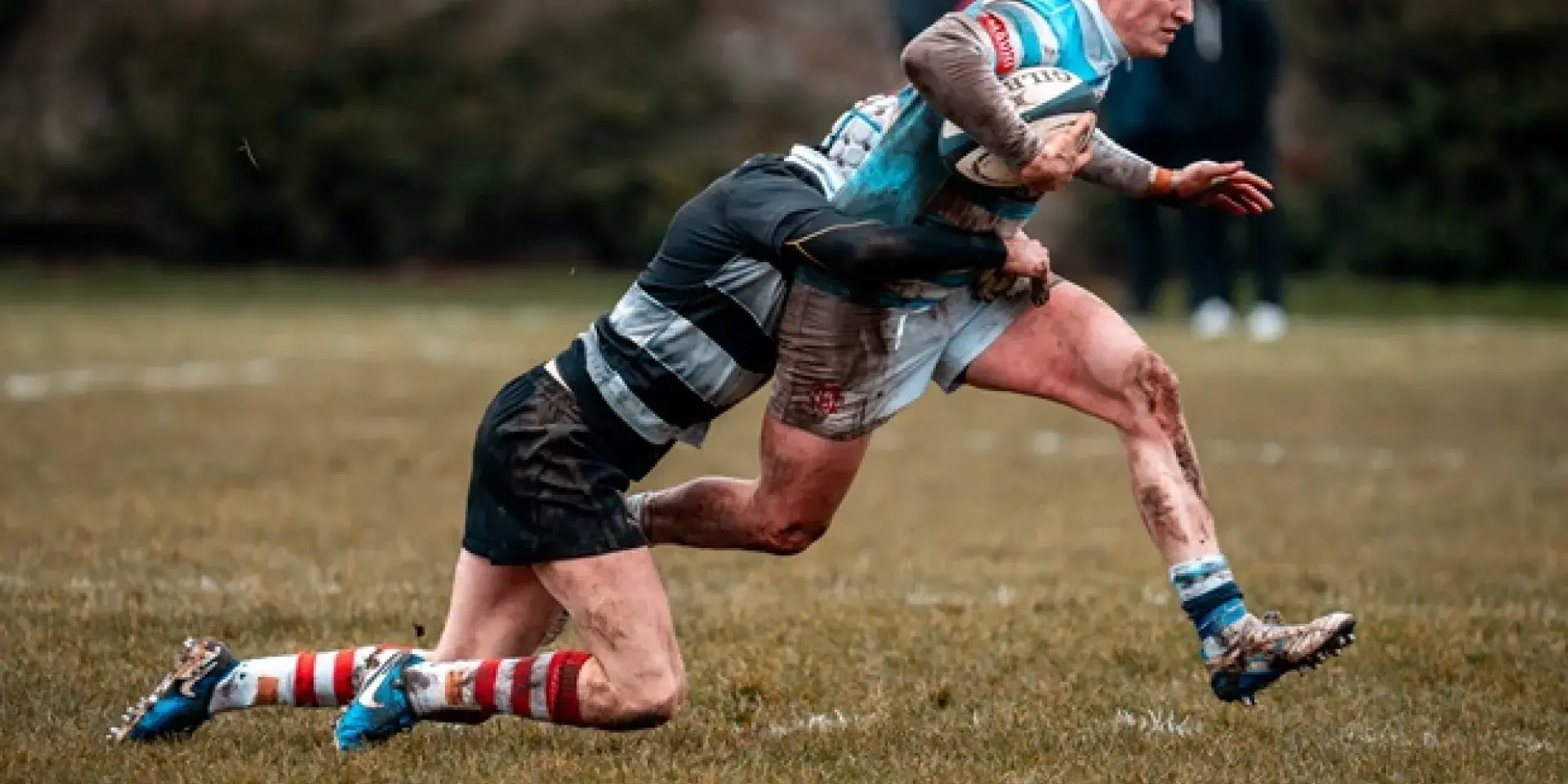Recent changes to the tackle height law for community rugby players in Scotland was linked with a 45 per cent reduction in head-on-head contact – one of the primary causes of sports related concussion, experts say.
A trial during the 2023/24 season found players were 22 per cent more likely to tackle bent at the waist, the recommended technique to reduce player head proximity and contact.
Lowered tackle height
Researchers who led the publication say the behaviour change resulted in fewer head-to-head and head-to-shoulder contacts between tacklers and ball-carriers.
The study of men’s community rugby in Scotland is the first peer-reviewed study to evaluate the lowered tackle height law introduced by World Rugby in the 2023/24 season.
The governing body recommended an opt-in international trial of lowering the tackle height from the shoulder to below the sternum or breastbone – also known as a belly tackle.
Player safety
With increasing recent focus of concussions in rugby union the trial was introduced to improve player safety by reducing the risk of head-on-head contact and concussions. The lower tackle height is considered the safest for both the tackler and the ball carrier.
The trial was adopted by Scottish Rugby and made compulsory across all amateur playing levels.
Researchers at the University of Edinburgh used video analysis to study 18,702 tackles from 60 men’s community matches to compare the 2022/23 (pre-trial) and 2023/24 (trial) seasons.
The analysis used footage from Scottish Rugby which recorded players’ activity including tackle type, body position, contact point and head contact. This data was then coded according to guidelines developed by World Rugby.
Trial season
Lowering the tackle height was associated with a 29 per cent reduction in head-to-shoulder contact for the tackler and ball-carrier.
During the trial season tacklers were significantly more likely to enter contact in a bent at waist position.
This change was associated with a 19 per cent reduction in the rate of head and upper torso contacts to the ball-carrier and an increase in frequency of tackles to the ball carrier’s lower torso and upper legs.
Sanctions related to high tackles tripled in the 2023/2024 season. There was no significant change to the rate of all other illegal play.
They also found no significant increase in tacklers’ heads coming into contact with the ball-carriers’ hips or knees, which is associated with an increased risk of head injury assessments and concussion diagnosis.
International project
The study is part of an international project led by World Rugby to assess the effects of lowering the tackle height in 11 countries including Australia, England, France, Ireland, Italy, Japan, New Zealand, Scotland, South Africa and Wales.
Evaluations are underway assessing the impact of the tackle height law change on Scottish women’s community rugby and youth community rugby.


